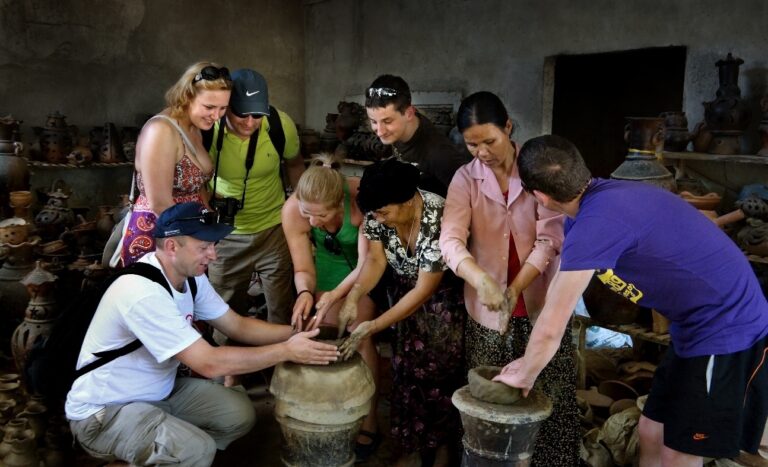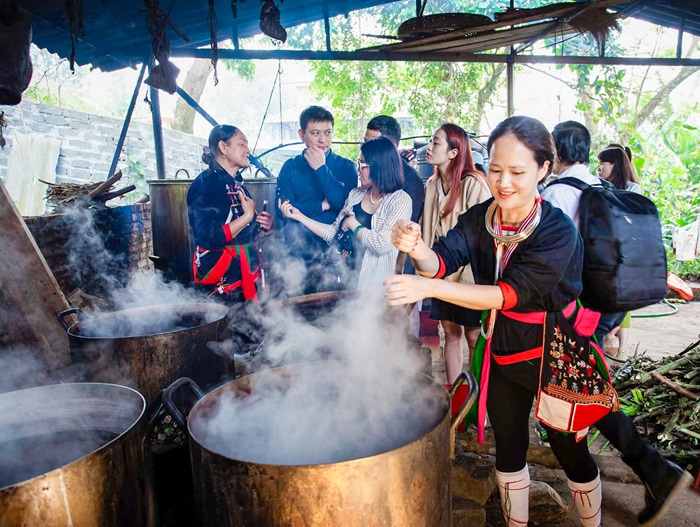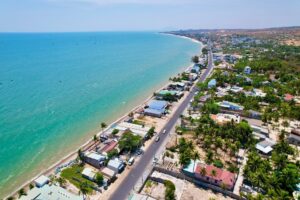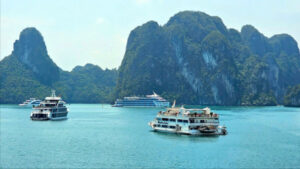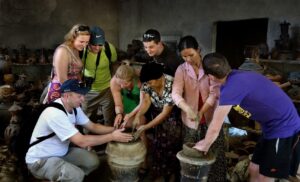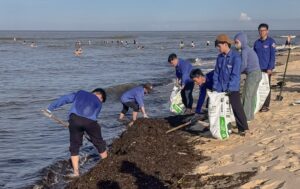Nestled amidst lush green mountains, the row of ‘trinh tuong’ (earthen-walled) houses with yin-yang tiled roofs in Na Reo, Tam Hop Hamlet, Thanh Cong Commune, which belong to the Dao Tien ethnic community, is a captivating highlight for visitors exploring Nguyen Binh District, Cao Bang Province.
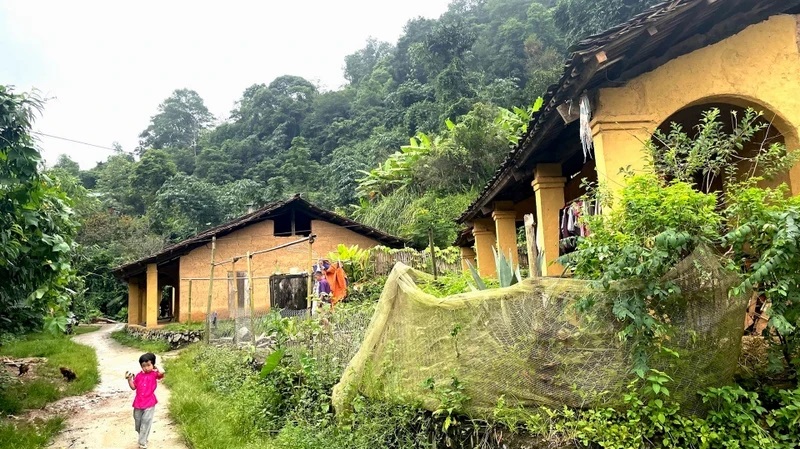
The earthen-walled houses are over 60 years old.
The Na Reo household cluster consists of over 30 families who live together at the foot of a mountain, shrouded in mist year-round and surrounded by towering bamboo forests. The primary sources of income for the locals come from growing bamboo, arrowroot, and livestock farming. Dao ethnic women continue to uphold their traditional craft of weaving brocade and using beeswax to create intricate patterns.
Harmonising with the natural landscape, the row of over 60-year-old earthen-walled houses has largely retained its distinctive indigenous architecture. Built in the 1960s as part of a unified layout, these houses are enclosed by sturdy stone fences, with staircases also constructed from stacked stones.
A defining feature of these houses is their clay floors, solid earthen walls, and ancient-style yin-yang tiled roofs. The cluster consists of nearly ten adjoining houses, along with a few separate homes of the same architectural style extending further along the area. The communal lifestyle is evident in the shared water reservoir and the storage of harvested corn and rice in lofts at the gable ends of the houses.
The yin-yang tiled roofs have aged with time, with the misaligned, cracked, and broken tiles further accentuating the old-world charm of the earthen-walled houses. Occasionally, the quiet of Na Reo is broken by the cheerful chatter of visitors who come to explore, take photographs, or fly drones to capture the picturesque scenery.
A walk around the area reveals a slow-paced lifestyle, largely untouched by modern influences. As a result, the indigenous cultural environment has been well preserved. The residents are kind-hearted and welcoming to guests. Despite possessing rich cultural and tourism potential, the Na Reo community has yet to find ways to effectively harness and develop these resources for community-based tourism.
Welcoming us into his simply furnished home, Chu Ung Tich shared that his house was built by his parents around 1964. Over the years, apart from replacing the yin-yang roof tiles a few times, the house has remained largely untouched. Recently, an increasing number of visitors have come to learn about the ethnic culture and traditional crafts of the highlands, showing great interest in the row of historic houses. However, to accommodate tourism, residents need to improve the surroundings, enhance their homes, and build proper sanitation facilities.
Living in the adjoining row of houses, Chu Thi Lien noted that the residents are closely knit, with little movement or change over the years. A common challenge among these homes is their deteriorating interiors and a lack of natural light. Many residents hope to renovate and improve their homes to make daily life more convenient.
Blessed with natural beauty and located within the Non Nuoc Cao Bang UNESCO Global Geopark, the Dao people’s cultural heritage has been well preserved. Nguyen Binh District is focusing on developing eco-tourism alongside cultural experiences.
With an approach that seeks to tap into potential resources while minimising the impact on nature, the local authorities have been encouraging Na Reo residents to avoid extensive upgrades or renovations that could alter the original structure of their homes. However, preserving traditional architecture must go hand in hand with improving living conditions.
Regarding the development of this unique tourism resource, Dao Nguyen Phong, Chairman of the People’s Committee of Nguyen Binh District, stated: “With its distinctive architecture and landscape, the district is providing financial support to help Na Reo residents repair the eroded and deteriorating earthen walls of their homes. Additionally, we are investing in infrastructure for community tourism sites such as Hoai Khao, the Phia Oac scenic viewpoint, Ban Phuong bamboo forest, the stone dragon fruit garden, and Phia Den Market. These efforts aim to connect with the Na Reo earthen-walled houses, creating engaging tours and destinations.”
Another invaluable asset is the residents’ mastery of building traditional earthen-walled houses entirely by hand, as well as their expertise in crafting beeswax-patterned designs on traditional garments.
Beyond preservation policies, local authorities need to guide the community in developing tourism products based on this diverse heritage, thereby creating livelihoods, increasing income, and improving the quality of life for the local people.
Ngoc Lien - Translated by NDO


